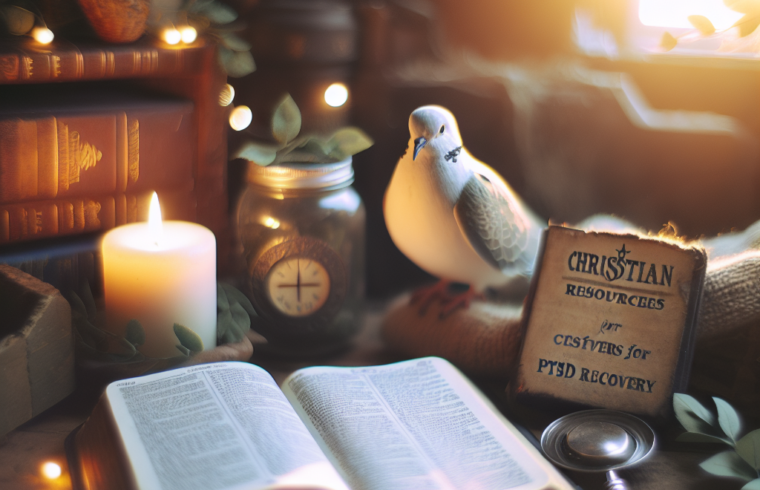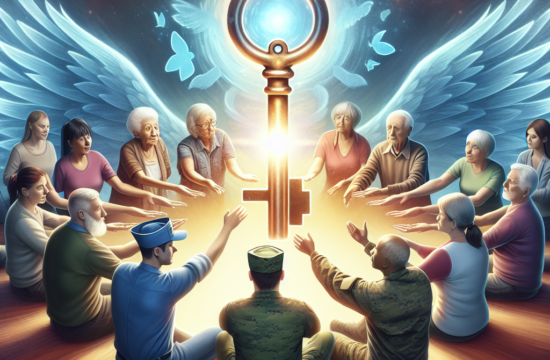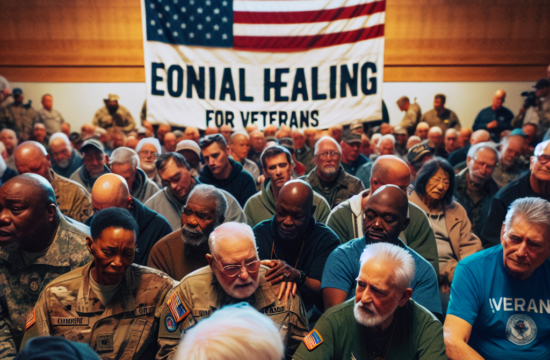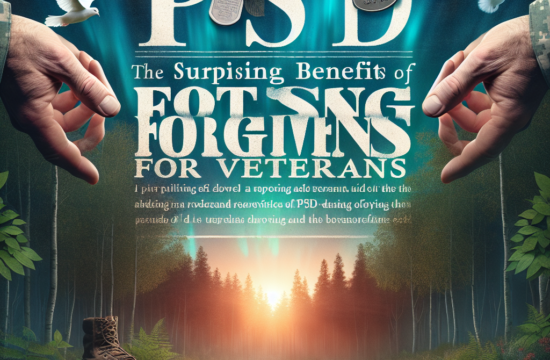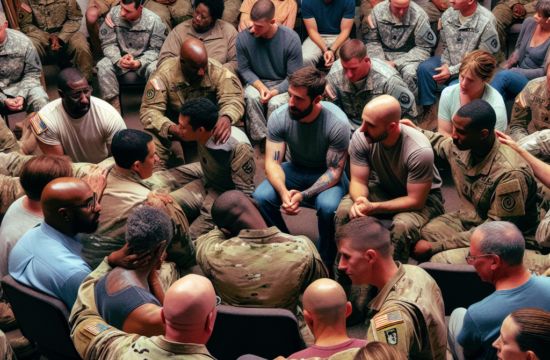==> Thank you for reading this post! Click Here If you are looking for support and Victory over PTSD.
Building a Supportive Community
Finding Like-Minded Individuals
One of the first steps I took in my healing journey was to find a community that really understood what I was going through. I remember the feeling of loneliness that comes with PTSD, as if you’re alone in a crowded room. Seeking out others who shared similar experiences—whether in church groups or support circles—made a massive difference. There’s something so powerful about having those deep, honest conversations and realizing you’re not without company.
Connecting with people who have faced their demons head-on helped me to gain perspective. It’s not just about sharing stories; it’s about strength in solidarity. I remember one evening sitting with a handful of folks after service, each opening up about their struggles, praying together, and feeling seen. It’s this laid-back vibe that really makes healing feel more like a journey, rather than a chore.
Online platforms also offer virtual support groups. It’s incredible how technology has brought us together. I joined a few dedicated Facebook groups, and every interaction felt uplifting—like a little nudge saying, “You got this!” Overall, building a supportive community has been a game changer in my recovery.
Utilizing Church Resources
Let’s be real, the church can be a treasure trove of resources. From counseling services to mentorship opportunities, I found a wealth of support hiding in plain sight. Many churches offer free or low-cost mental health services that incorporate a faith-based approach. When I finally decided to reach out, I discovered how many people were willing and able to help.
I vividly recall attending a workshop on mental health and spirituality hosted by my local church. It was refreshing to see that these topics were being acknowledged openly. They provided various tools for coping and included biblical teachings that comforted my soul. It made me feel like my faith and mental health could intersect in powerful ways.
Don’t underestimate the power of prayer meetings, either! Just sitting in a circle, holding hands, and sharing prayers for healing created a sense of peace that words can hardly describe. It’s affirming to know that others are lifting you up without judgment. Utilizing church resources became a springboard for much of my healing.
Participating in Faith-Based Therapy
This might sound cliché, but sometimes a little guidance can go a long way. Faith-based therapists can integrate psychological insights with spiritual nourishment—kinda like getting the best of both worlds. When I first went to one, I was a bit skeptical, but I came out feeling so understood and uplifted.
The unique approach blends cognitive behavioral therapy with scripture and prayer. I found this incredibly healing. It felt like I was learning skills and getting encouragement to lean more into my spirituality. Each session was like a breath of fresh air, allowing the burdens of my trauma to feel lighter as I discovered new coping strategies.
Many of these therapists understand church dynamics and incorporate them into their practice. The sharing of personal faith stories also helped me feel more connected to my therapist, making it easier to open up and confront the harder topics. Overall, faith-based therapy was an unexpected but immensely helpful part of my recovery.
Engaging with Scripture
Finding Verses for Comfort
When my PTSD felt like an unending storm, turning to scripture provided me with some much-needed calm. The Bible is overflowing with verses that whisper comfort and hope. One of my favorites, Psalm 34:18, says, “The Lord is close to the brokenhearted and saves those who are crushed in spirit.” Just reading these words gave me a warm blanket of assurance during some really dark nights.
I made it a habit to jot down verses that resonated with me and pinned them on my bathroom mirror. Each morning, they’d greet me with hope and reminders that I wasn’t alone. This ritual became a source of empowerment, a simple act that made a big difference.
Also, I explored different versions of the Bible. Sometimes the traditional language felt a bit stiff for me, but finding a modern translation made it more relatable. Reading these verses out loud—like a personal mantra—really helped reinforce their message in my mind.
Meditative Practices Inspired by Biblical Teachings
Engaging with scripture can go beyond just reading; there’s a beautiful practice of meditation that can be woven into it. I started practicing a meditative form of prayer, sometimes called contemplative prayer, where I take a verse and let it simmer in my heart for a while. This stillness allows me to connect the words spiritually while tending to my emotional state.
Honestly, just sitting still felt revolutionary at first—my brain wasn’t used to being quiet! But over time, this practice became an oasis amid the chaos of my thoughts. During these moments, I found clarity, and often, the knots in my heart felt a bit looser.
Apps like Insight Timer or even YouTube can guide your meditative journey, with sessions that blend Scripture and mindfulness. It’s a great way to create space for peace during turbulent times. This blend of reflection and calm grounded me in an otherwise shaky emotional landscape.
Joining Bible Study Groups
Getting involved in a Bible study group was another fantastic avenue for growth. It’s amazing how discussing scripture can lead to deeper insights! When I started sharing interpretations and feelings about certain passages with others, I discovered different perspectives that added richness to my understanding.
These discussions became therapeutic in their own right. The combination of exploring faith and being vulnerable with others really fostered a sense of community that was supportive and loving. Think of it like a garden where everyone’s different experiences contributed to a beautiful tapestry of faith and healing.
Plus, many groups incorporate prayer and active faith practices, which creates a nurturing environment for everyone involved. The friendships formed were genuine, and those connections continued to provide encouragement long after the sessions ended. Bible study was about nurturing not just my faith, but my emotional well-being too.
Incorporating Prayer into Daily Life
Creating a Prayer Routine
For me, incorporating prayer into my daily routine felt like setting a foundational stone in my recovery journey. I started small—just a few minutes in the morning to set the tone for the day. Bringing that peaceful energy into my mornings worked wonders, and I began feeling more grounded and ready to face challenges.
I even started journaling my prayers. Writing down my thoughts made it easier for me to articulate my feelings, fears, and hopes. It was like having a heart-to-heart chat with God. Looking back at those entries now shows me how much growth I’ve experienced, which is a comforting sight.
Connecting with God through prayer was more than just asking for help; it became an opportunity for thanksgiving and appreciation. Recognizing the positive aspects of my life—even amid the struggles—helped align my outlook and mood. Creating this routine became crucial as I navigated the rough waters of PTSD.
Get Support and Help with Recovery! Visit us for more Information and Support
Praying with Others
Sometimes, praying alone wasn’t enough. Finding people to pray with me added another layer to my healing. I began inviting friends and family to join me in prayer sessions, and it turned into a beautiful merging of hearts and intentions. These shared moments uplifted my spirit and reinforced that I wasn’t navigating this journey solo.
Attending prayer groups at my church was also a fantastic way to connect. Feelings of vulnerability transformed into shared burdens as we collectively prayed for various needs—my heart felt lighter with every prayer lifted. The sense of togetherness was incredibly empowering and reignited hope in my heart.
Having such a support network truly brought the communal aspect of faith to life. It reminded me that we’re all in this together, and even when spirals of darkness threaten to overwhelm, the power of collective prayer can light the way through.
Listening for God’s Guidance
Sometimes, it’s more about listening than speaking. I learned that prayer can be a two-way street. I started making intentional space to listen for God’s guidance during my prayer time instead of just doing all the talking. This became a vital part of my routine, and it surprised me how often I received a sense of clarity when I simply sat in silence.
Journaling those moments also helped track any insights or messages I received during prayer. Reflecting on these instances allowed me to see correlations between my prayers and the events that followed, fostering a deeper sense of trust in the divine plan.
Embracing this listening aspect of prayer has helped me feel more attuned to my spiritual path. It’s almost like tuning into a radio station—the more I listen, the clearer the signals become. That clarity provided strength and courage as I walked my recovery journey.
Utilizing Inspirational Resources
Books and Literature
There are countless books out there that blend spiritual wisdom with practical advice for healing PTSD. I dove into works like “The Body Keeps the Score” and found the connections between faith, healing, and mental health fascinating. These books often feel like a conversation partner on the healing journey, dropping insights at just the right moment.
Many authors intertwine personal stories with actionable steps, creating a relatable read that you can’t help but absorb. When you can see a piece of your own journey echoed in someone else’s words, it sparks a sense of hope. That’s powerful! I can’t tell you how many times a chapter hit me like a sledgehammer, making me rethink my experiences in a new light.
I also began seeking out Christian authors who tackle mental health head-on. These voices reminded me that healing doesn’t negate faith—rather, it often enhances it. Reading their stories inspired me, validating my experiences while steering me toward hope and new possibilities.
Podcasts and Sermons
If you’re like me and enjoy learning on-the-go, podcasts are a goldmine of information and inspiration. I found many that focus on faith, mental health, and personal recovery stories. Listening to others share their journeys became a source of comfort—each episode felt like a gentle reminder that we all face trials, yet we can find grace amidst them.
I also religiously followed sermons on mental health from my church and other ministries. The insights shared in these sermons often aligned perfectly with what I was experiencing at that moment. It was almost like a nudge from God during my healing process, and I found that comfortingly spiritual.
Engaging with these resources not only built my knowledge but also continually re-emphasized the intertwining of faith and healing. They reinforced that I was not the only one traversing this rocky road. These voices became part of my support network in a lovely, auditory way.
Connecting with Art and Music
Art and music have always been significant in my life, but I discovered that they can also be a powerful part of healing. Whether it’s listening to worship music or creating art that expresses my feelings, these forms of expression became vital for processing traumas associated with PTSD.
Lately, I’ve been exploring how worship and healing music can calm frayed nerves and create a safe space for emotional release. I remember moments where a particular song seemed to speak directly to what I was feeling. Those melodies became anthems of resilience for me, echoing my journey and wrapping me in a sense of solace.
Plus, engaging with art, whether it’s painting or writing poetry, provided an outlet for feelings that seemed unexplainable. Expressing those emotions creatively became a therapeutic practice. I learned that through all this, I wasn’t just healing; I was creating a narrative—my narrative. Art made the healing feel more tangible, even at its toughest moments.
FAQ
1. What are some of the first steps to take in finding support for PTSD recovery?
The first steps often involve seeking out a supportive community. Connecting with like-minded individuals, utilizing church resources, or even finding faith-based therapy can be incredibly beneficial. These connections help diminish feelings of isolation and encourage shared healing.
2. How can scripture aid in emotional healing for someone with PTSD?
Scripture offers comfort and hope. Verses can remind us that we are not alone in our struggles. Engaging with the Bible through reading, meditation, and prayer can help provide peace and clarity in chaotic times.
3. Why is prayer important in the recovery process?
Prayer creates a deeper connection with God, fostering a sense of peace and alignment. It’s also an opportunity to articulate feelings while seeking guidance and comfort. Including others in prayer amplifies these effects, integrating communal support into the healing process.
4. What resources are beneficial for someone facing PTSD?
Resources include supportive communities (both in-person and online), faith-based therapy, scripture, inspiring literature, podcasts, and engaging in creative outlets like music and art. Each offers unique support in navigating healing journeys.
5. Can engaging in faith-based strategies help with PTSD recovery?
Yes, many find that integrating faith into their recovery journey—through community support, prayer, scripture, and inspirational resources—creates a holistic healing experience. It reassures individuals that they have divine support throughout their journey.
This piece is written in a casual, relatable style to mimic the personal perspective of someone sharing their journey through PTSD recovery using Christian resources. Each section provides insight and practical steps while aligning with the required formatting.

